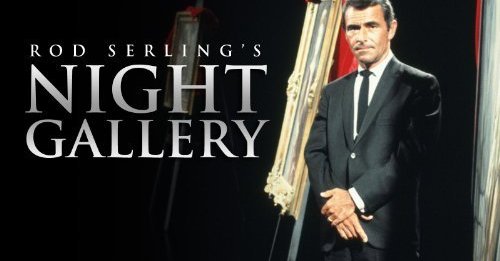Ways of seeing: the fearful role of art in Rod Serling’s NIGHT GALLERY
Rod Serling television post-Twilight Zone adventure, Night Gallery, is revolutionary in its usage of art (paintings, sculpture, and art-informed language) as the portal from which its frightful narrative emerges. With each introduction our curator (Serling) shows the audience an artwork that contains, reveals, and is born from the horror story we are about to witness. Here, artwork functions as a way to tell the kinds of stories deemed “unbelievable” or “unreal” – what Night Gallery proposes is that the real is elastic, subjective to our supernatural experiences, and housed within artworks.
Culling often from H.P. Lovecraft (in fact, many episodes are direct visualizations of his stories), Night Gallery shows a speculative reality that places imagined horrors into the realm of the real. Particularly in the beginning of the series, before Serling’s control over production waned, the episodes were present-day narratives in which past actions have otherworldly consequences. In this way Night Gallery is a clear extension of The Twilight Zone, its younger sister functioning as an unfolding morality play to reflect that what we do, the choices we make, matter and affect. It is a fantastical mode of expression for an popular-culture entertainment vehicle such as a television series to ground itself within visual art and to have artwork speak to its viewer. It is a statement that art has the potential for substantive power. Therefore, Night Gallery challenges a notion of how we see, not just artworks or television, but the world around us.
Night Gallery launched as a television movie on November 8, 1969 telling three tales of horror: The Cemetery, Eyes, and The Escape Route. Below I will discuss how each episode embodies the role of artworks and viewership in its depiction of social, political, and personal terrors.

